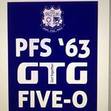Farouk Gulsara's Blog, page 126
June 1, 2018
After life, what?
Personal Shopper (2016)

Almost halfway through the movie, clueless of its genre, I remained lost. I did not understand why the protagonist, Maureen, was buying expensive clothes and jewellery but not wearing them or rather is forbidden to don them. Maureen is a personal shopper of a celebrity who cannot possibly be seen in public shopping!
Maureen has a genetic heart condition which was shared by her recently demised twin brother. She had not come in term with her loss as he was apparently healthy before his heart attack. Maureen, who considers herself a clairvoyant, tries to communicate with her brother for personal closure. In the interim, she moonshines as a seer to ascertain whether a house is haunted before it is sold. She also gets a mysterious text from an unknown number. The situation gets murky when her employer is murdered brutally, and she is muddled in the police investigations. After she is cleared of any wrongdoings, she continues her pursuit of contacting her dead brother.
Mankind has always wondered at the vastness of the Universe and the waste of space around us if we were the only living beings around. The whole Big Bang could not have happened just for us. People started toying with the idea that, perhaps, lifeforms dwelled in different realms. The ending of life in one plane just transports them to another and another. The 'soul', having unfinished businesses on Earth, may wander around for psychics to be a conduit for the living to say their peace. Whether these experiences are real or quackery is of personal choice. Is it that the dead are desperately trying to relate through obscure methods or are existing ones just convincing themselves that such a thing is actually happening? Are some just too insensitive to observe the subtle changes around them and the others just making something out of nothing at all?
Are the dead souls out there really looking out for us? Like a guiding star, like a guardian angel. Do they 'scream' at us trying to prevent us from doing something so wrong? Or is life just 'Game Over' and everything goes BLANK! Like a TV station that has stopped transmission.
https://asok22.wixsite.com/real-lesson
This work is licensed under a Creative Commons Attribution 4.0 International License.
 http://asok22.wix.com/real-lesson
http://asok22.wix.com/real-lesson
http://.facebook.com/farouk.gulsara
www.riflerangeboy.com

Almost halfway through the movie, clueless of its genre, I remained lost. I did not understand why the protagonist, Maureen, was buying expensive clothes and jewellery but not wearing them or rather is forbidden to don them. Maureen is a personal shopper of a celebrity who cannot possibly be seen in public shopping!
Maureen has a genetic heart condition which was shared by her recently demised twin brother. She had not come in term with her loss as he was apparently healthy before his heart attack. Maureen, who considers herself a clairvoyant, tries to communicate with her brother for personal closure. In the interim, she moonshines as a seer to ascertain whether a house is haunted before it is sold. She also gets a mysterious text from an unknown number. The situation gets murky when her employer is murdered brutally, and she is muddled in the police investigations. After she is cleared of any wrongdoings, she continues her pursuit of contacting her dead brother.
Mankind has always wondered at the vastness of the Universe and the waste of space around us if we were the only living beings around. The whole Big Bang could not have happened just for us. People started toying with the idea that, perhaps, lifeforms dwelled in different realms. The ending of life in one plane just transports them to another and another. The 'soul', having unfinished businesses on Earth, may wander around for psychics to be a conduit for the living to say their peace. Whether these experiences are real or quackery is of personal choice. Is it that the dead are desperately trying to relate through obscure methods or are existing ones just convincing themselves that such a thing is actually happening? Are some just too insensitive to observe the subtle changes around them and the others just making something out of nothing at all?
Are the dead souls out there really looking out for us? Like a guiding star, like a guardian angel. Do they 'scream' at us trying to prevent us from doing something so wrong? Or is life just 'Game Over' and everything goes BLANK! Like a TV station that has stopped transmission.
https://asok22.wixsite.com/real-lesson

This work is licensed under a Creative Commons Attribution 4.0 International License.
 http://asok22.wix.com/real-lesson
http://asok22.wix.com/real-lessonhttp://.facebook.com/farouk.gulsara
www.riflerangeboy.com

Published on June 01, 2018 14:47
May 30, 2018
Life, without Divinity but Intellect!
Sex, Death and the Meaning of Life (Documentary; 2012)
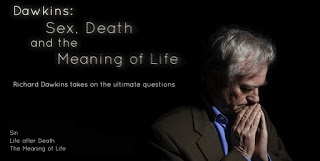 Different from many of his presentations, here Richard Dawkins portrays an image of sobriety as he tackles one of the many unanswered questions of life. Rather than being ballistic against the many dogmatic beliefs and seemingly meaningless rituals of organised religions, he is willing to engage in his attempt to understand their many practices and how it maintains sanity in Man.
Different from many of his presentations, here Richard Dawkins portrays an image of sobriety as he tackles one of the many unanswered questions of life. Rather than being ballistic against the many dogmatic beliefs and seemingly meaningless rituals of organised religions, he is willing to engage in his attempt to understand their many practices and how it maintains sanity in Man.
Studies have shown that everyone sins including people from a religious background. Unlike their non-believing counterparts, believers carry a considerable amount of guilt. The incidence of cheating, lying, fornicating and watching porn is the same across the board. In fact, some figures show suppression brings the worse in us.
On one aspect, we act and behave like animals. On the other hand, due to development in our neocortex, we are capable of rational thinking. We have the capacity for reasoning and able to differentiate right from wrong.
Animals think within the cocoon of satisfying their personal needs, of food, mate and territorial space. Humans, however, have been bestowed with the ability to empathise. Perhaps with this feature, they can be kinder towards each other and are able to judge what is morality. This mindfulness must be the precursor to spur the goodness that is buried within us.
If so much of decency is embodied within us, why do things go wrong? The same mental faculty must be at fault. Our capacity to imagine, to concoct a potentially disgusting or fearful situation may make us wary o the others. We need to safeguard ourselves from a potential collapse of the other. Hence, the justification of self-indulgence and self above others.
Faith gives us a reassurance that a third party will be a guiding light and a protector of sorts as we allay our fear and recruit our resources to meet the challenge of the day. Without this conviction, life would be a bigger struggle than it already is.
If life is just all about our lifespan, it will not make much sense. There would be nothing more to look forward to. The fear or bliss of an afterlife must be a good enough motivator to put law and order in place. Earth would then be a home not only for the big and strong but for the weak and incapacitated. Simply put, life on Earth is just for the continuity of progeny. Centurions live long live probably thanks to their longevity genes. On a related observation, they also have fewer offspring. Is that Nature's attempt to give them a longer time to sow their wild oats?
Many religions of the world talk about souls being immortal and the body just being a vessel to carry the soul. The only thing that seems to continue generations after generations is the passage of genetic material. And the blueprint of this template must have started from our sea-living ancestors (or Adam and Eve), and its traces are ongoing. So that it must the Atma or the Soul. But that, however, does not explain the re-births in different species based on your karma.
https://asok22.wixsite.com/real-lesson This work is licensed under a Creative Commons Attribution 4.0 International License.
This work is licensed under a Creative Commons Attribution 4.0 International License.
 http://asok22.wix.com/real-lesson
http://asok22.wix.com/real-lesson
http://.facebook.com/farouk.gulsara
www.riflerangeboy.com
 Different from many of his presentations, here Richard Dawkins portrays an image of sobriety as he tackles one of the many unanswered questions of life. Rather than being ballistic against the many dogmatic beliefs and seemingly meaningless rituals of organised religions, he is willing to engage in his attempt to understand their many practices and how it maintains sanity in Man.
Different from many of his presentations, here Richard Dawkins portrays an image of sobriety as he tackles one of the many unanswered questions of life. Rather than being ballistic against the many dogmatic beliefs and seemingly meaningless rituals of organised religions, he is willing to engage in his attempt to understand their many practices and how it maintains sanity in Man.Studies have shown that everyone sins including people from a religious background. Unlike their non-believing counterparts, believers carry a considerable amount of guilt. The incidence of cheating, lying, fornicating and watching porn is the same across the board. In fact, some figures show suppression brings the worse in us.
On one aspect, we act and behave like animals. On the other hand, due to development in our neocortex, we are capable of rational thinking. We have the capacity for reasoning and able to differentiate right from wrong.
Animals think within the cocoon of satisfying their personal needs, of food, mate and territorial space. Humans, however, have been bestowed with the ability to empathise. Perhaps with this feature, they can be kinder towards each other and are able to judge what is morality. This mindfulness must be the precursor to spur the goodness that is buried within us.
If so much of decency is embodied within us, why do things go wrong? The same mental faculty must be at fault. Our capacity to imagine, to concoct a potentially disgusting or fearful situation may make us wary o the others. We need to safeguard ourselves from a potential collapse of the other. Hence, the justification of self-indulgence and self above others.
Faith gives us a reassurance that a third party will be a guiding light and a protector of sorts as we allay our fear and recruit our resources to meet the challenge of the day. Without this conviction, life would be a bigger struggle than it already is.
If life is just all about our lifespan, it will not make much sense. There would be nothing more to look forward to. The fear or bliss of an afterlife must be a good enough motivator to put law and order in place. Earth would then be a home not only for the big and strong but for the weak and incapacitated. Simply put, life on Earth is just for the continuity of progeny. Centurions live long live probably thanks to their longevity genes. On a related observation, they also have fewer offspring. Is that Nature's attempt to give them a longer time to sow their wild oats?
Many religions of the world talk about souls being immortal and the body just being a vessel to carry the soul. The only thing that seems to continue generations after generations is the passage of genetic material. And the blueprint of this template must have started from our sea-living ancestors (or Adam and Eve), and its traces are ongoing. So that it must the Atma or the Soul. But that, however, does not explain the re-births in different species based on your karma.
https://asok22.wixsite.com/real-lesson
 This work is licensed under a Creative Commons Attribution 4.0 International License.
This work is licensed under a Creative Commons Attribution 4.0 International License. http://asok22.wix.com/real-lesson
http://asok22.wix.com/real-lessonhttp://.facebook.com/farouk.gulsara
www.riflerangeboy.com

Published on May 30, 2018 09:01
May 28, 2018
Truth, as we see it!
My Gita (2015)
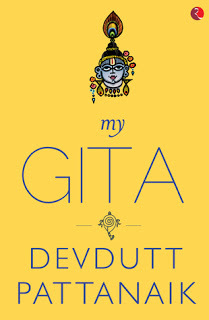 Devdutt Pattanaik
Devdutt Pattanaik
The author drew a lot of flak from the so-called Sanskrit scholars and Hindutva protectorates for his inaccuracies in its translation, factual 'errors' and understanding of the scriptures. The purist, the defenders of the Hindu inscriptions assert that he is not a qualified person to give his interpretation of the revered holy book. Bhagavad Gita, the poem of the God, is sacred scripture. They assert that one has to be a Brahmin or ordained to do the mammoth task of interpreting the Gita. In short, not every Tom, Dick and Harry can tell his views. I thought it reeked a lot like many of the fundamentalists and religious zealots amongst us who insist that there is one way to the Truth and it is their way. There is no compromise in religion.
Pandits (not pundits) like Rajiv Malhotra and Nityanand Misra also take offence to classifying Bhagadvita as a myth. Most intellectuals today accept happenings in Gita as historical occurrences, not a story.
That is the exact thing the writer is to dispel. The Gita is a discourse that happened between a charioteer who happened to be Krishna himself and a warrior of the Pandava clan, Arjuna, who had cold feet on the eve of a decisive battle. This conversation was apparently telepathically intercepted by the enemy medium, Sanjaya, who informed the blind Kaurava King, Dhritarashtra. So what is written in the Gita is essentially the interpretation of Sanjaya as he told the King. What Krishna meant to say may not seem to have been what Arjuna understood. What Sanjaya inferred from his tapping from his understanding may be hampered by the jargons. What Dhritarashtra, the father of his sons who were to go war, would like to hear would have been about the safety of his sons. The take-home message is that a narration may appear different to different individuals. It is all one's viewpoint. Hence, Pattanaik feels justified to give his take on the text. No one has exclusive rights to God's poems.
Our way of thinking is thematic. Over the years, over generations, our priorities vary. For this reason, our perception of the Truth, the solution to problems in life and our outlook on life changes with time. There is no single right or wrong answer to any question. There are no right or wrong actions. Everything is perspective. Arjuna's slaying of his cousins, uncles and nephews may appear unjust, but it may be a necessary evil to the continuity of the kingdom. On the other hand, the whole war is just a familial dispute over worldly things like property and pride. Unfortunately, sometimes painful events have to happen. It is the order of Nature.
Although the answers to all these dilemmas are not given on a platter, it provides us with a platform to discuss, argue and justify our moves. The scriptures are not dogmatic on what is the correct action but give different perspectives on things - all roads lead to Rome or nine ways to skin a cat.
The message put forward in the Gita is one for the householder, one who does not lead a hermetic life but one who embraces relationships within a family unit. At the time of writing, the flavour of the time was incorporating family life in seeking the Truth. The times were changing from one of a recluse and celibate, as advocated by Buddhists' scholars to one inclusive of conjugal relationships and the by-products. From one of wanting to reach eternal bliss (moksha), the society must have morphed to one that emphasises good governance and order (?dharma). War is not for vengeance or ambitions but is about equilibrium.
With a social order, the law will help the helpless and provide justice; without it, the law is just a tool for control, oppression and sabotage.
The author goes on to talk about the importance of exchange in the Hindu rituals. The rituals done here are a mean of exchange. The practitioner of act offers his offerings to Nature and receives what is given back; not with the intention to demand.
In my opinion, our obsessive journey to seek the Truth will surely meet a dead-end. It is what we make of it. It may come in slices. We need to use our behaviours, emotions and intellect to find a solution.
 © chandrugidwani
© chandrugidwani
The symbolism of life. The chariot, the reins, the horses, the charioteer, the wheels etc.
https://asok22.wixsite.com/real-lesson This work is licensed under a Creative Commons Attribution 4.0 International License.
This work is licensed under a Creative Commons Attribution 4.0 International License.
 http://asok22.wix.com/real-lesson
http://asok22.wix.com/real-lesson
http://.facebook.com/farouk.gulsara
www.riflerangeboy.com
 Devdutt Pattanaik
Devdutt Pattanaik
The author drew a lot of flak from the so-called Sanskrit scholars and Hindutva protectorates for his inaccuracies in its translation, factual 'errors' and understanding of the scriptures. The purist, the defenders of the Hindu inscriptions assert that he is not a qualified person to give his interpretation of the revered holy book. Bhagavad Gita, the poem of the God, is sacred scripture. They assert that one has to be a Brahmin or ordained to do the mammoth task of interpreting the Gita. In short, not every Tom, Dick and Harry can tell his views. I thought it reeked a lot like many of the fundamentalists and religious zealots amongst us who insist that there is one way to the Truth and it is their way. There is no compromise in religion.
Pandits (not pundits) like Rajiv Malhotra and Nityanand Misra also take offence to classifying Bhagadvita as a myth. Most intellectuals today accept happenings in Gita as historical occurrences, not a story.
That is the exact thing the writer is to dispel. The Gita is a discourse that happened between a charioteer who happened to be Krishna himself and a warrior of the Pandava clan, Arjuna, who had cold feet on the eve of a decisive battle. This conversation was apparently telepathically intercepted by the enemy medium, Sanjaya, who informed the blind Kaurava King, Dhritarashtra. So what is written in the Gita is essentially the interpretation of Sanjaya as he told the King. What Krishna meant to say may not seem to have been what Arjuna understood. What Sanjaya inferred from his tapping from his understanding may be hampered by the jargons. What Dhritarashtra, the father of his sons who were to go war, would like to hear would have been about the safety of his sons. The take-home message is that a narration may appear different to different individuals. It is all one's viewpoint. Hence, Pattanaik feels justified to give his take on the text. No one has exclusive rights to God's poems.
Our way of thinking is thematic. Over the years, over generations, our priorities vary. For this reason, our perception of the Truth, the solution to problems in life and our outlook on life changes with time. There is no single right or wrong answer to any question. There are no right or wrong actions. Everything is perspective. Arjuna's slaying of his cousins, uncles and nephews may appear unjust, but it may be a necessary evil to the continuity of the kingdom. On the other hand, the whole war is just a familial dispute over worldly things like property and pride. Unfortunately, sometimes painful events have to happen. It is the order of Nature.
Although the answers to all these dilemmas are not given on a platter, it provides us with a platform to discuss, argue and justify our moves. The scriptures are not dogmatic on what is the correct action but give different perspectives on things - all roads lead to Rome or nine ways to skin a cat.
The message put forward in the Gita is one for the householder, one who does not lead a hermetic life but one who embraces relationships within a family unit. At the time of writing, the flavour of the time was incorporating family life in seeking the Truth. The times were changing from one of a recluse and celibate, as advocated by Buddhists' scholars to one inclusive of conjugal relationships and the by-products. From one of wanting to reach eternal bliss (moksha), the society must have morphed to one that emphasises good governance and order (?dharma). War is not for vengeance or ambitions but is about equilibrium.
With a social order, the law will help the helpless and provide justice; without it, the law is just a tool for control, oppression and sabotage.
The author goes on to talk about the importance of exchange in the Hindu rituals. The rituals done here are a mean of exchange. The practitioner of act offers his offerings to Nature and receives what is given back; not with the intention to demand.
In my opinion, our obsessive journey to seek the Truth will surely meet a dead-end. It is what we make of it. It may come in slices. We need to use our behaviours, emotions and intellect to find a solution.
 © chandrugidwani
© chandrugidwani The symbolism of life. The chariot, the reins, the horses, the charioteer, the wheels etc.
https://asok22.wixsite.com/real-lesson
 This work is licensed under a Creative Commons Attribution 4.0 International License.
This work is licensed under a Creative Commons Attribution 4.0 International License. http://asok22.wix.com/real-lesson
http://asok22.wix.com/real-lessonhttp://.facebook.com/farouk.gulsara
www.riflerangeboy.com

Published on May 28, 2018 14:54
May 26, 2018
Still learning...
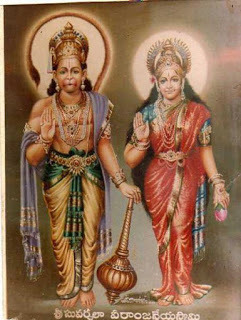 Hanuman and Suvarchala
Hanuman and SuvarchalaCredit: PinterestI used to frequent temples quite a bit in my younger days. My mother probably thought that by loitering God's home, maybe He would take pity and throw a bone to us to chew. She must have put her trust in God believing that He would not disappoint. Be it, Thaipusam, fire-walking ceremony or billy-goat slaughtering ceremony, she would be there, and I would be passively taken along. It was her sincere belief that through divine intervention, her children would live a better life than her and that God would peel open the inner eye of Consciousness. We still await but hope, but we cannot say we did not get in abundance. But what is too much and when is it enough, anyway?
As a child, my mind used to wonder a lot. Rather than doing the things I was supposed to do, I found pleasure as an observer of things and people around me. Sometimes, I ask myself what they thought and why they did the things that they did. Occasionally, Amma gives explanations that made sense to her. During other times, I drew my own conclusions. Periodically, I drew blanks.
Like the time when I pondered why worshipers would pray to demigods and not the main deity. Since the real McCoy had more clout to grant wishes, why go through intermediaries? Why prostrate to the fearsome Muniswaran when Shiva is just around the corner? I realised later that there were entry restrictions into temples once upon a time. That could explain the reason for people in the lower rung of the society to settle for lesser Gods as intermediaries.
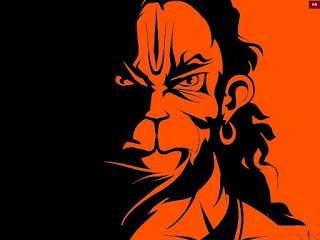 Angry Hanuman - An icon of aggressive Hindutva
Angry Hanuman - An icon of aggressive HindutvaCredit: Karan Acharya
But I could not comprehend was why congregants would bow and exhibit so much reverence to Hanuman who is, in fact, less a being in his primate form when Rama and his consort are the real bosses. I thought it was the celibacy of the Brahmachari pose that he displayed. But then there is a temple in Telangana where Hanuman is seen as a couple with Survachala (Lord Surya's daughter).
If Hanuman was enlightened by his proximity to Rama, why are there no Arjuna temple as he had a one-to-one pep talk with Krishna, a more complex avatar of Vishnu? The whole song of the Lord (Bhagavad Gita) is the testimony of His attempt at psychotherapy of a commander who turned cold feet on the eve of a decisive combat.
Firstly, Hanuman is no monkey but of a member of a clan of hirsute people from the southern part of the subcontinent. He is cocksure that his dharma is to serve Rama. He chooses his wars carefully. He observes and learns from the sideline like a third person. This attribute must be the one that draws people to salute him. Knowing exactly what to do in any adversity is one quality Man yearns to have. He does not base his decisions on emotion or creed. He even refused to help fellow Monkey King, Sugriva, as Hanuman thought his course was not just. Devotees hope that His nature of doing the right thing at the right time without fear or favour would rub off on them. His tenacity and undevoted loyalty to the task at hand is another plus point. HanuMAN, the world's first superhero.
The learning process goes on...
https://asok22.wixsite.com/real-lesson

This work is licensed under a Creative Commons Attribution 4.0 International License.
 http://asok22.wix.com/real-lesson
http://asok22.wix.com/real-lessonhttp://.facebook.com/farouk.gulsara
www.riflerangeboy.com

Published on May 26, 2018 09:14
Just another exchange of vows!
https://scroll.in/article/879633/hidden-under-meghan-markles-givenchy-veil-was-britains-bid-to-hide-its-bloody-colonial-history
COLONIAL HISTORY
Embroidered into Meghan Markle’s veil was Britain’s bid to celebrate its bloody colonial historyThe bride’s dress is being praised for its floral motifs of the 53 Commonwealth countries. But colonialism destroyed the lives of India’s weavers.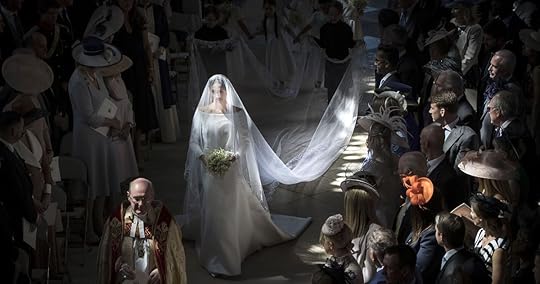 Danny Lawson / AFP
Danny Lawson / AFP
May 20, 2018 · 12:01 pm
Aparna Kapadia
Meghan Markle wore a beautifully simple, ivory silk dress at her wedding to Britain’s Prince Harry on Saturday morning. The royal wedding has been a global media event though of not much relevance even to the British crown. After all, Harry is the sixth in the line of succession to the throne. And given the pressing world news from just the past week – the killing of dozens of Palestinians in Gaza, North Korea’s threat of withdrawing from nuclear talks – a celebration of the monarchy, of a country barely able to keep itself together, appears strikingly overwrought.Markle’s wedding dress was created by Clare Waight Keller, a British woman and the first female designer of Givenchy. The garment’s most dazzling feature is its 16.5-foot silk tulle veil that has been hand-embroidered with flora representing the 53 countries of the Commonwealth. The media was all praise for the dress as a sartorial choice that represents a break from tradition. The New York Times’s fashion critic raved that it “placed the woman proudly front center and underscored Ms. Markle’s own independence”. The simplicity of the dress was also widely praised for upholding feminist values rather than those of a fairy-tale princess.Missing in the commentary was what seems to be an obvious point – the arrogant representation of 53 Commonwealth countries is a celebration of colonial rule. Another reminder, if one was needed, that the true reckoning of the unfortunate history of colonialism in Britain is far away. It is important to restate what that was – a violent period of centuries when the hapless Commonwealth, nearly 25% of the world, suffered under an extractive alien power’s rule.A conscious choiceMarkle’s dress was not a designer’s fanciful faux-pas but a conscious choice. The BBC reports that the bride suggested the design because the Commonwealth will be an essential part of her and Prince Harry’s official work after they are married. Clearly, the sad truth of Britain’s imperial history eludes the Prince and the new Princess. The media too, especially British media, abets this glossing over. And this matters, as recently as 2014, a YouGov survey, for instance, found that most people in Britain still think the British Empire is more something to be proud of (59%) rather than ashamed of (19%).
To add insult to injury, the dress is being celebrated as a hand-crafted work, the creation of a local designer. If one just looked at India, the largest of the Commonwealth countries, of the many British-era atrocities, none were more consequential and impoverishing than the destruction of the local handloom and textiles of India. In the early days of the British East India Company’s trade with the subcontinent in the 1600s, chintz, the hand-printed and natural-dyed fabric with floral designs, was the rage in Europe; first as decorative household furnishings and later for fashionable garments. Known as palampores in Britain, these fabrics and other fine Indian textiles gained so much popularity that a parliamentary act was passed prohibiting their sales.
From this time, until India’s Independence in 1947, the Indian artisan and weaver’s livelihood and skills were systematically destroyed. It was no accident then that Gandhi chose the charkha, the Indian weavers’ basic cotton-spinning tool, as the symbol of India’s struggle for independence.
Markle’s British-designer dress and its veil with the hand-embroidered flora of the 53 Commonwealth countries overshadows this dark past. It should not surprise us, given the new age of denialism, that the royal family and the British media thought nothing of reclaiming the bloody history of colonialism as a point of celebration.
Aparna Kapadia is a historian of South Asia at Williams College in the US.
https://asok22.wixsite.com/real-lesson
This work is licensed under a Creative Commons Attribution 4.0 International License.
 http://asok22.wix.com/real-lesson
http://asok22.wix.com/real-lesson
http://.facebook.com/farouk.gulsara
www.riflerangeboy.com
COLONIAL HISTORY
Embroidered into Meghan Markle’s veil was Britain’s bid to celebrate its bloody colonial historyThe bride’s dress is being praised for its floral motifs of the 53 Commonwealth countries. But colonialism destroyed the lives of India’s weavers.
 Danny Lawson / AFP
Danny Lawson / AFPMay 20, 2018 · 12:01 pm
Aparna Kapadia
Meghan Markle wore a beautifully simple, ivory silk dress at her wedding to Britain’s Prince Harry on Saturday morning. The royal wedding has been a global media event though of not much relevance even to the British crown. After all, Harry is the sixth in the line of succession to the throne. And given the pressing world news from just the past week – the killing of dozens of Palestinians in Gaza, North Korea’s threat of withdrawing from nuclear talks – a celebration of the monarchy, of a country barely able to keep itself together, appears strikingly overwrought.Markle’s wedding dress was created by Clare Waight Keller, a British woman and the first female designer of Givenchy. The garment’s most dazzling feature is its 16.5-foot silk tulle veil that has been hand-embroidered with flora representing the 53 countries of the Commonwealth. The media was all praise for the dress as a sartorial choice that represents a break from tradition. The New York Times’s fashion critic raved that it “placed the woman proudly front center and underscored Ms. Markle’s own independence”. The simplicity of the dress was also widely praised for upholding feminist values rather than those of a fairy-tale princess.Missing in the commentary was what seems to be an obvious point – the arrogant representation of 53 Commonwealth countries is a celebration of colonial rule. Another reminder, if one was needed, that the true reckoning of the unfortunate history of colonialism in Britain is far away. It is important to restate what that was – a violent period of centuries when the hapless Commonwealth, nearly 25% of the world, suffered under an extractive alien power’s rule.A conscious choiceMarkle’s dress was not a designer’s fanciful faux-pas but a conscious choice. The BBC reports that the bride suggested the design because the Commonwealth will be an essential part of her and Prince Harry’s official work after they are married. Clearly, the sad truth of Britain’s imperial history eludes the Prince and the new Princess. The media too, especially British media, abets this glossing over. And this matters, as recently as 2014, a YouGov survey, for instance, found that most people in Britain still think the British Empire is more something to be proud of (59%) rather than ashamed of (19%).
To add insult to injury, the dress is being celebrated as a hand-crafted work, the creation of a local designer. If one just looked at India, the largest of the Commonwealth countries, of the many British-era atrocities, none were more consequential and impoverishing than the destruction of the local handloom and textiles of India. In the early days of the British East India Company’s trade with the subcontinent in the 1600s, chintz, the hand-printed and natural-dyed fabric with floral designs, was the rage in Europe; first as decorative household furnishings and later for fashionable garments. Known as palampores in Britain, these fabrics and other fine Indian textiles gained so much popularity that a parliamentary act was passed prohibiting their sales.
From this time, until India’s Independence in 1947, the Indian artisan and weaver’s livelihood and skills were systematically destroyed. It was no accident then that Gandhi chose the charkha, the Indian weavers’ basic cotton-spinning tool, as the symbol of India’s struggle for independence.
Markle’s British-designer dress and its veil with the hand-embroidered flora of the 53 Commonwealth countries overshadows this dark past. It should not surprise us, given the new age of denialism, that the royal family and the British media thought nothing of reclaiming the bloody history of colonialism as a point of celebration.
Aparna Kapadia is a historian of South Asia at Williams College in the US.
https://asok22.wixsite.com/real-lesson

This work is licensed under a Creative Commons Attribution 4.0 International License.
 http://asok22.wix.com/real-lesson
http://asok22.wix.com/real-lessonhttp://.facebook.com/farouk.gulsara
www.riflerangeboy.com

Published on May 26, 2018 08:40
May 24, 2018
It used to be good to be King
 © daily telegraphIn 1981, the televised event was easily the most watched event of recent times. The institution called marriage was still looked upon as a beacon of hope to keep the family unit intact. When they said that it was a public declaration of private intent, they meant it. It still had respect. The one act that solemnised the union of male and female was treated with due respect. Young girls went agape looking at their idol whose hairstyle they would soon be aping. They too wished that their wedding dress would be as glamorous. Forget the fact that groom stuck out like a sore thumb; his royal status would nullify all other deformities. How they adored the horse carriages, the guest list, the guests' wardrobe and the flowers. But see how it all turned out - the two-timing, the depression, the possible contamination of bloodlines, the accident, the conspiracy theory.
© daily telegraphIn 1981, the televised event was easily the most watched event of recent times. The institution called marriage was still looked upon as a beacon of hope to keep the family unit intact. When they said that it was a public declaration of private intent, they meant it. It still had respect. The one act that solemnised the union of male and female was treated with due respect. Young girls went agape looking at their idol whose hairstyle they would soon be aping. They too wished that their wedding dress would be as glamorous. Forget the fact that groom stuck out like a sore thumb; his royal status would nullify all other deformities. How they adored the horse carriages, the guest list, the guests' wardrobe and the flowers. But see how it all turned out - the two-timing, the depression, the possible contamination of bloodlines, the accident, the conspiracy theory.Much has happened since then. It is all water under the bridge now. The confluence of hearts is no longer only legitimate between members of different sexes. The bond that holds this threadbare link is no stronger than the paper that it is inked on. The preoccupation with self and hedonism has created a mockery of the man-sanctioned pledge of loyalty and responsibility. Infusion of genetic juices is no longer sacred. Offspring may have two males for parental duties. Divine approved decree is given legal status. Why the mockery if legality is the prime aim?
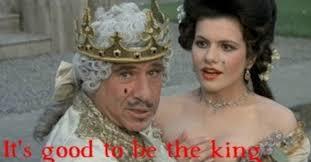 © Crazy History of the World
© Crazy History of the WorldThis time around the royal wedding did not garner that much excitement, at least in Malaysia, the once most of the most profitable colonies in the Commonwealth. Come to think of it, the natives' wealth was pilfered and divided amongst the self-proclaimed superior race of the world. Perhaps it is the heap of scandals upon scandals that the local media is churning by the minute, after the local elections that the function remains a non-event to the ordinary Malaysian.
Values change. If just about half a century ago, a king had to abdicate his throne to marry a woman of similar stature - a divorcee, actress and American; now it is a non-issue. Maybe it is because the groom is quite low down in the pecking order of ascension to the throne.
Over the years, the idea of a monarch who is bestowed by genetic make-up to decide on the direction of the country does not excite people anymore. Starting with the French Revolution, then the Bolshevik uprising and the World Wars, the royalties have fallen down like a house of cards. Now, it seems like they have to sing for their supper. They have to re-invent themselves to stay relevant. The British royal family have to keep quiet while exhibiting the share of their loot, The Kohinoor, shamelessly, without creating any more controversies. The Bulgarian dynasty was revived after winning the Presidential elections as a commoner. The Spanish have to fight out the long arms of the law. It is not easy to be a King anymore!
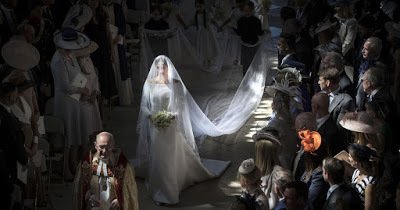 © Danny Lawson / AFP
© Danny Lawson / AFPThe dark cloud that hung over the matrimonial garb; the motifs of flowers of the former colonies of the bygoneEmpire rekindles the dark past the colonial masters. https://asok22.wixsite.com/real-lesson

This work is licensed under a Creative Commons Attribution 4.0 International License.
 http://asok22.wix.com/real-lesson
http://asok22.wix.com/real-lessonhttp://.facebook.com/farouk.gulsara
www.riflerangeboy.com

Published on May 24, 2018 09:01
May 23, 2018
Calcutta 1945
https://scroll.in/magazine/877275/photos-the-american-photographer-who-came-to-calcutta-during-wwii-and-fell-in-love-with-the-city
The American photographer who came to Calcutta during WWII and fell in love with the city Clyde Waddell spent around two years in South Asia, but it was Calcutta that fascinated him.
 "Early morning in many Calcutta street finds natives huddled around a breakfast teapot, having risen from their sidewalk abode. The milkman makes a regular stop at this community gathering on busy Park Street." | Photo credit: Clyde Waddell/University of Pennsylvania/Wikimedia Commons [Public Domain]
"Early morning in many Calcutta street finds natives huddled around a breakfast teapot, having risen from their sidewalk abode. The milkman makes a regular stop at this community gathering on busy Park Street." | Photo credit: Clyde Waddell/University of Pennsylvania/Wikimedia Commons [Public Domain]
May 15, 2018 · 11:30 am Anu Kumar
In December 1940, Clyde Waddell, then a 24-year-old photographer with the Houston Chronicle, a Texan newspaper, travelled with several newspapermen to Brownsville, further south in the state. It was an almost 12-hour bus ride from Houston, Waddell’s hometown, along the Gulf of Mexico that borders Texas. At the time, the airport in Brownsville was the first to offer flights to Mexico. The inaugural flight had the famous aviator, Charles Lindbergh, who flew in from Mexico City.It was a year before the US formally entered World War II but the airport was already important militarily for servicing war planes and training pilots. As was then compulsory, Waddell had already enlisted himself in the army two years ago.Apart from this one trip to Brownsville, Waddell had never travelled beyond his hometown. He was born on June 1916, part of a big family that included six other siblings. Little is known about his early life, but by his early 20s, Waddell was already a press photographer, living away from his family. As a local pressman, he covered events of note in and around Houston.Towards the end of 1943 – two years after the US formally entered WWII – Waddell began a totally unexpected journey to the other side of the world. Between November 1943 and February 1945, he was a photographer attached to the public relations unit of the Southeast Asia Command, serving as “personal press photographer” to Lord Mountbatten, commander of the allied forces.
[image error] "Aerial view of Calcutta downtown. In the upper left background is Hindusthan building, U.S. Army HQ. The oldest part of the city starts at the Esplanade and extends upwards. The city was founded in the early 1700s." Photo credit: Clyde Waddell/University of Pennsylvania/Wikimedia Commons [Public Domain]
Waddell accompanied Mountbatten on important missions, such as visiting frontlines and hospital stations. In February 1945, a magazine, Phoenix , was launched as a joint Allied initiative and Waddell joined its staff, basing himself in Calcutta (now Kolkata). He became part of important Allied missions, photographing the war front in Burma (now Myanmar) and travelled to Singapore soon after the Allied victory.The China-Burma-India war theatre was a vital part of the war. The US, Britain (including British India) and China rallied together – despite ostensible differences in very many areas, ranging from personal to the strategic – to fight the rapidly advancing Japanese. By February 1942, Japan, which had conquered Singapore, began advancing toward British India. The Japanese cut off the Burma Road, which served as an important British supply route from northeast India, and began work on the infamous Burma Railway. In response, Allied forces started building the Ledo Road (also called the Stilwell Road) at the end of December 1942.
[image error] "Highlight of the out-of-bounds visit is of course, a look-in on the lassies. These dusky ladies of the night ask from $3.00 to $6.00 for the dubious pleasure they offer..." Photo credit: Clyde Waddell/University of Pennsylvania/Wikimedia Commons [Public Domain]
The road supplemented, in large part, the gigantic military apparatus the Allied powers put into operation to hold the Japanese advance. Vast swathes of forestland were struck down to construct nearly 35 airfields, stretching from Agra to eastern India and present-day Bangladesh. Pipelines were extended to supply planes that flew daily sorties over the Himalayas to supply Chinese forces at Yunnan. These airplanes also helped the special demands of aerial photography.Aerial photographyWar photography began with the Crimean War of 1853, but by the Second World War, it had become more complex, specialised and, indeed, a necessity. Aerial photography allowed mapping of enemy territory, especially in this part of the world, which was covered by dense mosquito-infested jungles, where different ethnic groups dominated, rendering conventional reconnaissance methods impossible.us
 "This coconut market on Cornwallis street is a sample of the haphazard way in which many bazars are operated..."
"This coconut market on Cornwallis street is a sample of the haphazard way in which many bazars are operated..." "Indicative of the resumption of an age-old struggle for decent conditions is this post-war picture of tram workers on strike. The strike lasted nine days but employeess won par of their demands." Photo credit: Clyde Waddell/University of Pennsylvania/Wikimedia Commons [Public Domain]
"Indicative of the resumption of an age-old struggle for decent conditions is this post-war picture of tram workers on strike. The strike lasted nine days but employeess won par of their demands." Photo credit: Clyde Waddell/University of Pennsylvania/Wikimedia Commons [Public Domain] "Calcutta boasts the third largest cantilever bridge in the world. Its real importance, however, lies in the fact that it serves as Calcutta's gateway to the west, being the city's only bridge spanning the Hooghly. Taking 7 years to build, it cost $10,000,000. It towers 310 feet as the city's highest structure, is 2,150 feet long with a center span of 1,500 feet. It was completed in 1942, opened in February 1943."
"Calcutta boasts the third largest cantilever bridge in the world. Its real importance, however, lies in the fact that it serves as Calcutta's gateway to the west, being the city's only bridge spanning the Hooghly. Taking 7 years to build, it cost $10,000,000. It towers 310 feet as the city's highest structure, is 2,150 feet long with a center span of 1,500 feet. It was completed in 1942, opened in February 1943."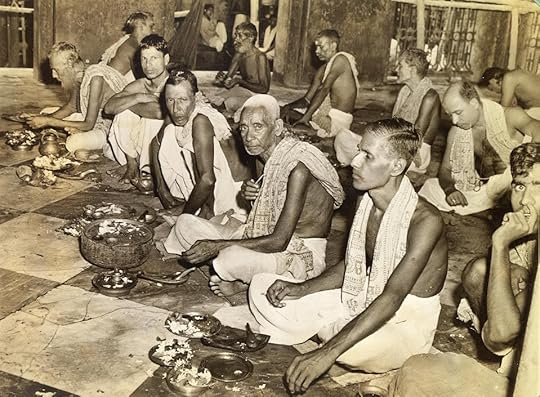 "Brahmins worhip in the Kalighat temple... Brahmins are the highest caste of Hindus, their mark of distinction being the piece of string seen in the hand of the gray-haired senior Brahmin."
"Brahmins worhip in the Kalighat temple... Brahmins are the highest caste of Hindus, their mark of distinction being the piece of string seen in the hand of the gray-haired senior Brahmin."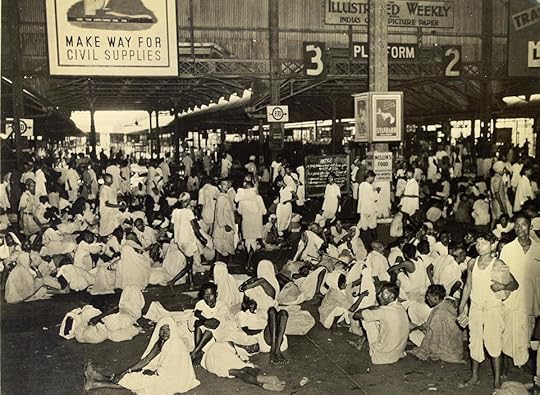 "Indians seem to be great travellers. Wartime transportation priorities have forced many weary travelers to remain in stations, waiting for long periods. Because of no other means, many must set up house-keeping during the long vigil, cooking their food on the spot and sleeping on the bare floor."
"Indians seem to be great travellers. Wartime transportation priorities have forced many weary travelers to remain in stations, waiting for long periods. Because of no other means, many must set up house-keeping during the long vigil, cooking their food on the spot and sleeping on the bare floor." "This coconut market on Cornwallis street is a sample of the haphazard way in which many bazars are operated..."
"This coconut market on Cornwallis street is a sample of the haphazard way in which many bazars are operated..." "Indicative of the resumption of an age-old struggle for decent conditions is this post-war picture of tram workers on strike. The strike lasted nine days but employeess won par of their demands." Photo credit: Clyde Waddell/University of Pennsylvania/Wikimedia Commons [Public Domain]Next15
"Indicative of the resumption of an age-old struggle for decent conditions is this post-war picture of tram workers on strike. The strike lasted nine days but employeess won par of their demands." Photo credit: Clyde Waddell/University of Pennsylvania/Wikimedia Commons [Public Domain]Next15
Waddell, it appears, flew into Colombo in Sri Lanka, which served as Mountbatten’s headquarters in the war’s initial phase. Photographers who saw war action were part of several squadrons operational in this war sphere, some of which disbanded soon after such as the 9th and 40th reconnaissance squadrons.Waddell spent around two years in the region, but it was Calcutta that fascinated him. His photographs of the city, some of which were printed in Phoenix – often as the cover – became immensely popular among his colleagues. (He was credited as Joe Waddell.) It was at their request that, on his return home to Texas, Wadell self-published several of his photographs in a book titled A Yank’s Memories of Calcutta.Besides an introduction provided by an old friend, Charles Preston, and an illustration of the photographer himself, the book contained 60 elegant black and white photos (8 x 10 in) in silver gelatin print. The introduction described Calcutta as a “romantic city”, “full of enigmas” and that only Waddell could have successfully captured its mysteries.revious
 "A strong contrast to the splendor of the Jain temple is the Kalighat temple, built in the 1600s. It is famous for the practice of sacrificing goats, as many as 1,500 having been slaughtered in one day. On the bank of a canal cut from the original Ganges bed, it is the temple of the Goddess kali."
"A strong contrast to the splendor of the Jain temple is the Kalighat temple, built in the 1600s. It is famous for the practice of sacrificing goats, as many as 1,500 having been slaughtered in one day. On the bank of a canal cut from the original Ganges bed, it is the temple of the Goddess kali." "Believe it or not, this man has just bitten the head of a live Krait snake. He is professor Sher Mohammed and his feats include drinking acid, eating glass, fire-walking..." Photo credit: Clyde Waddell/University of Pennsylvania/Wikimedia Commons [Public Domain]
"Believe it or not, this man has just bitten the head of a live Krait snake. He is professor Sher Mohammed and his feats include drinking acid, eating glass, fire-walking..." Photo credit: Clyde Waddell/University of Pennsylvania/Wikimedia Commons [Public Domain]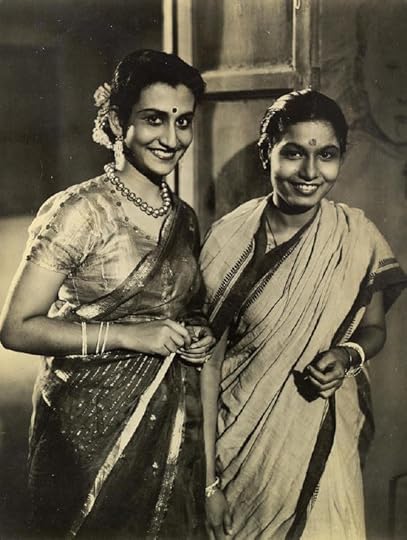 "Indian movie actresses. Dressed in sarees, 19-year old Binota Bose, left, and Mrs. Rekha Mullick, right, are right at home before the camera and lights. Miss Bose earns $360.00 per month and Mrs. Mullick $210.00. Both are well educated and prefer American books, pictures."
"Indian movie actresses. Dressed in sarees, 19-year old Binota Bose, left, and Mrs. Rekha Mullick, right, are right at home before the camera and lights. Miss Bose earns $360.00 per month and Mrs. Mullick $210.00. Both are well educated and prefer American books, pictures." "'Patty-cake Annie' is the nickname tagged to the makers of India's most plentiful fuel by American Soldiers who must indulge their sense of humor. The sun-baked cow-dung patties are used by the poorer classes who cannot afford scarce wood for fuel to heat their homes and cook their food."
"'Patty-cake Annie' is the nickname tagged to the makers of India's most plentiful fuel by American Soldiers who must indulge their sense of humor. The sun-baked cow-dung patties are used by the poorer classes who cannot afford scarce wood for fuel to heat their homes and cook their food."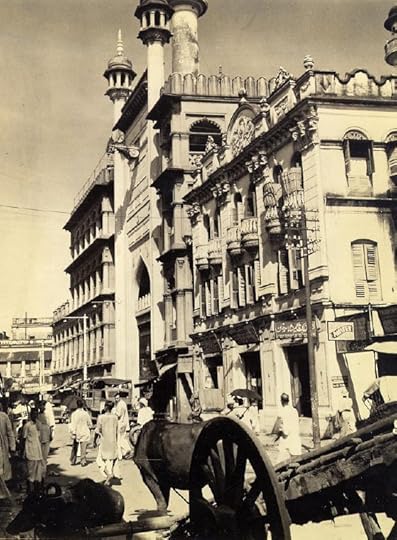 "Nimtolla Mosque, the largest Mohammedan mosque in Calcutta. Its prayer hall will accommodate 10,000 worshippers. A modern specimen of Indo-Saracenic architecture, its minarets are 151 feet high."
"Nimtolla Mosque, the largest Mohammedan mosque in Calcutta. Its prayer hall will accommodate 10,000 worshippers. A modern specimen of Indo-Saracenic architecture, its minarets are 151 feet high." "A strong contrast to the splendor of the Jain temple is the Kalighat temple, built in the 1600s. It is famous for the practice of sacrificing goats, as many as 1,500 having been slaughtered in one day. On the bank of a canal cut from the original Ganges bed, it is the temple of the Goddess kali."
"A strong contrast to the splendor of the Jain temple is the Kalighat temple, built in the 1600s. It is famous for the practice of sacrificing goats, as many as 1,500 having been slaughtered in one day. On the bank of a canal cut from the original Ganges bed, it is the temple of the Goddess kali." "Believe it or not, this man has just bitten the head of a live Krait snake. He is professor Sher Mohammed and his feats include drinking acid, eating glass, fire-walking..." Photo credit: Clyde Waddell/University of Pennsylvania/Wikimedia Commons [Public Domain]Next
"Believe it or not, this man has just bitten the head of a live Krait snake. He is professor Sher Mohammed and his feats include drinking acid, eating glass, fire-walking..." Photo credit: Clyde Waddell/University of Pennsylvania/Wikimedia Commons [Public Domain]Next
Detailed in these 60 photos are moments that capture Calcutta in the time between two momentous events – the famine of 1943 and the riots that would precede Partition. It was a city teeming with people – residents, refugees and soldiers – and interesting characters from a juggler and snake charmer to society ladies.Waddell’s book and body of work are now rare collector’s items and some of his pictures were auctioned by Christie's in 2011. Kolkata’s Akriti Gallery had an exhibition of Waddell’s work in 2015 and Robert James Kadel’s book Where I Came In... – In China Burma India, published in 1997 contained parts of Waddell’s book.
[image error] "A little snooping in Chinatown will turn up the little opium dens stuck down an alley (not recommended without police escort). Actually, the smokers shown in this picture do it legally. Each den is licensed for so many pipes. Each pipe costs a rupee, a phial of opium five rupees. Average smoker consumes a phial a day and there are about 186 pipes licensed in Calcutta." Photo credit: Clyde Waddell/University of Pennsylvania/Wikimedia Commons [Public Domain]
Memorialising warThere were other photographers whose documentation of the war in its many facets remain vital today. Frank Bond, for instance, whose work is digitized in the South Asian library of the University of Chicago, was an aerial photographer who set up the first photo lab at Akyab Island off Burma’s coast to process his photos. There was also George Rodger who covered the retreat of the British forces and wrote a story on the Burma Road as he travelled with the retreating forces toward China.The filmmaker David Quaid also saw war action when he flew with Merrill’s Marauders as they were airdropped into Japanese-held Burma. Artist photographers like the California-based James Milford Zornesmemorialised life along the Salween river in southwest China.
[image error] "The indifference of the passerby on this downtown Calcutta street to the plight of the dying woman in the foreground is considered commonplace. During the famine of 1943, cases like this were to be seen in most every block, and though less frequent now, the hardened public reaction seems to have endured." Photo credit: Clyde Waddell/University of Pennsylvania/Wikimedia Commons [Public Domain]
The US Air Transport Command had been set up in 1941 with just three people but by 1944, it had over a hundred thousand personnel. Its planes travelled the globe in secret operations to service US and allied forces. Photographer Tom McAvoy, one of Life magazine’s founders in 1936, flew to India in just ten days and back on the Fireball Express, which travelled from Florida, down the coast of South America, to Natal in South Africa before heading eastward across the Indian Ocean to eastern India, spending only a few hours at each base before moving on.After Waddell returned to Houston by the end of the war, he never left his hometown to undertake a similar journey again. He spent his time taking pictures and worked, later, in the insurance business. He died in 1997, aged 81. Records show he never married and was happy to remain in his large family of cousins and siblings, all of whom lived close to one other in Texas.
[image error] "The Hooghly river is lined with bathing ghats like the one shown here. The troop transports in the background seem out of place in the old-world atmosphere created by the temple at left and the sampans at anchor." Photo credit: Clyde Waddell/University of Pennsylvania/Wikimedia Commons [Public Domain]
https://scroll.in/magazine/877275/photos-the-american-photographer-who-came-to-calcutta-during-wwii-and-fell-in-love-with-the-city





https://commons.wikimedia.org/wiki/Category:Photographs_of_Calcutta_by_Clyde_Waddell
https://asok22.wixsite.com/real-lesson
http://asok22.wix.com/real-lesson
http://.facebook.com/farouk.gulsara
www.riflerangeboy.com
The American photographer who came to Calcutta during WWII and fell in love with the city Clyde Waddell spent around two years in South Asia, but it was Calcutta that fascinated him.
 "Early morning in many Calcutta street finds natives huddled around a breakfast teapot, having risen from their sidewalk abode. The milkman makes a regular stop at this community gathering on busy Park Street." | Photo credit: Clyde Waddell/University of Pennsylvania/Wikimedia Commons [Public Domain]
"Early morning in many Calcutta street finds natives huddled around a breakfast teapot, having risen from their sidewalk abode. The milkman makes a regular stop at this community gathering on busy Park Street." | Photo credit: Clyde Waddell/University of Pennsylvania/Wikimedia Commons [Public Domain]May 15, 2018 · 11:30 am Anu Kumar
In December 1940, Clyde Waddell, then a 24-year-old photographer with the Houston Chronicle, a Texan newspaper, travelled with several newspapermen to Brownsville, further south in the state. It was an almost 12-hour bus ride from Houston, Waddell’s hometown, along the Gulf of Mexico that borders Texas. At the time, the airport in Brownsville was the first to offer flights to Mexico. The inaugural flight had the famous aviator, Charles Lindbergh, who flew in from Mexico City.It was a year before the US formally entered World War II but the airport was already important militarily for servicing war planes and training pilots. As was then compulsory, Waddell had already enlisted himself in the army two years ago.Apart from this one trip to Brownsville, Waddell had never travelled beyond his hometown. He was born on June 1916, part of a big family that included six other siblings. Little is known about his early life, but by his early 20s, Waddell was already a press photographer, living away from his family. As a local pressman, he covered events of note in and around Houston.Towards the end of 1943 – two years after the US formally entered WWII – Waddell began a totally unexpected journey to the other side of the world. Between November 1943 and February 1945, he was a photographer attached to the public relations unit of the Southeast Asia Command, serving as “personal press photographer” to Lord Mountbatten, commander of the allied forces.
[image error] "Aerial view of Calcutta downtown. In the upper left background is Hindusthan building, U.S. Army HQ. The oldest part of the city starts at the Esplanade and extends upwards. The city was founded in the early 1700s." Photo credit: Clyde Waddell/University of Pennsylvania/Wikimedia Commons [Public Domain]
Waddell accompanied Mountbatten on important missions, such as visiting frontlines and hospital stations. In February 1945, a magazine, Phoenix , was launched as a joint Allied initiative and Waddell joined its staff, basing himself in Calcutta (now Kolkata). He became part of important Allied missions, photographing the war front in Burma (now Myanmar) and travelled to Singapore soon after the Allied victory.The China-Burma-India war theatre was a vital part of the war. The US, Britain (including British India) and China rallied together – despite ostensible differences in very many areas, ranging from personal to the strategic – to fight the rapidly advancing Japanese. By February 1942, Japan, which had conquered Singapore, began advancing toward British India. The Japanese cut off the Burma Road, which served as an important British supply route from northeast India, and began work on the infamous Burma Railway. In response, Allied forces started building the Ledo Road (also called the Stilwell Road) at the end of December 1942.
[image error] "Highlight of the out-of-bounds visit is of course, a look-in on the lassies. These dusky ladies of the night ask from $3.00 to $6.00 for the dubious pleasure they offer..." Photo credit: Clyde Waddell/University of Pennsylvania/Wikimedia Commons [Public Domain]
The road supplemented, in large part, the gigantic military apparatus the Allied powers put into operation to hold the Japanese advance. Vast swathes of forestland were struck down to construct nearly 35 airfields, stretching from Agra to eastern India and present-day Bangladesh. Pipelines were extended to supply planes that flew daily sorties over the Himalayas to supply Chinese forces at Yunnan. These airplanes also helped the special demands of aerial photography.Aerial photographyWar photography began with the Crimean War of 1853, but by the Second World War, it had become more complex, specialised and, indeed, a necessity. Aerial photography allowed mapping of enemy territory, especially in this part of the world, which was covered by dense mosquito-infested jungles, where different ethnic groups dominated, rendering conventional reconnaissance methods impossible.us
 "This coconut market on Cornwallis street is a sample of the haphazard way in which many bazars are operated..."
"This coconut market on Cornwallis street is a sample of the haphazard way in which many bazars are operated..." "Indicative of the resumption of an age-old struggle for decent conditions is this post-war picture of tram workers on strike. The strike lasted nine days but employeess won par of their demands." Photo credit: Clyde Waddell/University of Pennsylvania/Wikimedia Commons [Public Domain]
"Indicative of the resumption of an age-old struggle for decent conditions is this post-war picture of tram workers on strike. The strike lasted nine days but employeess won par of their demands." Photo credit: Clyde Waddell/University of Pennsylvania/Wikimedia Commons [Public Domain] "Calcutta boasts the third largest cantilever bridge in the world. Its real importance, however, lies in the fact that it serves as Calcutta's gateway to the west, being the city's only bridge spanning the Hooghly. Taking 7 years to build, it cost $10,000,000. It towers 310 feet as the city's highest structure, is 2,150 feet long with a center span of 1,500 feet. It was completed in 1942, opened in February 1943."
"Calcutta boasts the third largest cantilever bridge in the world. Its real importance, however, lies in the fact that it serves as Calcutta's gateway to the west, being the city's only bridge spanning the Hooghly. Taking 7 years to build, it cost $10,000,000. It towers 310 feet as the city's highest structure, is 2,150 feet long with a center span of 1,500 feet. It was completed in 1942, opened in February 1943." "Brahmins worhip in the Kalighat temple... Brahmins are the highest caste of Hindus, their mark of distinction being the piece of string seen in the hand of the gray-haired senior Brahmin."
"Brahmins worhip in the Kalighat temple... Brahmins are the highest caste of Hindus, their mark of distinction being the piece of string seen in the hand of the gray-haired senior Brahmin." "Indians seem to be great travellers. Wartime transportation priorities have forced many weary travelers to remain in stations, waiting for long periods. Because of no other means, many must set up house-keeping during the long vigil, cooking their food on the spot and sleeping on the bare floor."
"Indians seem to be great travellers. Wartime transportation priorities have forced many weary travelers to remain in stations, waiting for long periods. Because of no other means, many must set up house-keeping during the long vigil, cooking their food on the spot and sleeping on the bare floor." "This coconut market on Cornwallis street is a sample of the haphazard way in which many bazars are operated..."
"This coconut market on Cornwallis street is a sample of the haphazard way in which many bazars are operated..." "Indicative of the resumption of an age-old struggle for decent conditions is this post-war picture of tram workers on strike. The strike lasted nine days but employeess won par of their demands." Photo credit: Clyde Waddell/University of Pennsylvania/Wikimedia Commons [Public Domain]Next15
"Indicative of the resumption of an age-old struggle for decent conditions is this post-war picture of tram workers on strike. The strike lasted nine days but employeess won par of their demands." Photo credit: Clyde Waddell/University of Pennsylvania/Wikimedia Commons [Public Domain]Next15Waddell, it appears, flew into Colombo in Sri Lanka, which served as Mountbatten’s headquarters in the war’s initial phase. Photographers who saw war action were part of several squadrons operational in this war sphere, some of which disbanded soon after such as the 9th and 40th reconnaissance squadrons.Waddell spent around two years in the region, but it was Calcutta that fascinated him. His photographs of the city, some of which were printed in Phoenix – often as the cover – became immensely popular among his colleagues. (He was credited as Joe Waddell.) It was at their request that, on his return home to Texas, Wadell self-published several of his photographs in a book titled A Yank’s Memories of Calcutta.Besides an introduction provided by an old friend, Charles Preston, and an illustration of the photographer himself, the book contained 60 elegant black and white photos (8 x 10 in) in silver gelatin print. The introduction described Calcutta as a “romantic city”, “full of enigmas” and that only Waddell could have successfully captured its mysteries.revious
 "A strong contrast to the splendor of the Jain temple is the Kalighat temple, built in the 1600s. It is famous for the practice of sacrificing goats, as many as 1,500 having been slaughtered in one day. On the bank of a canal cut from the original Ganges bed, it is the temple of the Goddess kali."
"A strong contrast to the splendor of the Jain temple is the Kalighat temple, built in the 1600s. It is famous for the practice of sacrificing goats, as many as 1,500 having been slaughtered in one day. On the bank of a canal cut from the original Ganges bed, it is the temple of the Goddess kali." "Believe it or not, this man has just bitten the head of a live Krait snake. He is professor Sher Mohammed and his feats include drinking acid, eating glass, fire-walking..." Photo credit: Clyde Waddell/University of Pennsylvania/Wikimedia Commons [Public Domain]
"Believe it or not, this man has just bitten the head of a live Krait snake. He is professor Sher Mohammed and his feats include drinking acid, eating glass, fire-walking..." Photo credit: Clyde Waddell/University of Pennsylvania/Wikimedia Commons [Public Domain] "Indian movie actresses. Dressed in sarees, 19-year old Binota Bose, left, and Mrs. Rekha Mullick, right, are right at home before the camera and lights. Miss Bose earns $360.00 per month and Mrs. Mullick $210.00. Both are well educated and prefer American books, pictures."
"Indian movie actresses. Dressed in sarees, 19-year old Binota Bose, left, and Mrs. Rekha Mullick, right, are right at home before the camera and lights. Miss Bose earns $360.00 per month and Mrs. Mullick $210.00. Both are well educated and prefer American books, pictures." "'Patty-cake Annie' is the nickname tagged to the makers of India's most plentiful fuel by American Soldiers who must indulge their sense of humor. The sun-baked cow-dung patties are used by the poorer classes who cannot afford scarce wood for fuel to heat their homes and cook their food."
"'Patty-cake Annie' is the nickname tagged to the makers of India's most plentiful fuel by American Soldiers who must indulge their sense of humor. The sun-baked cow-dung patties are used by the poorer classes who cannot afford scarce wood for fuel to heat their homes and cook their food." "Nimtolla Mosque, the largest Mohammedan mosque in Calcutta. Its prayer hall will accommodate 10,000 worshippers. A modern specimen of Indo-Saracenic architecture, its minarets are 151 feet high."
"Nimtolla Mosque, the largest Mohammedan mosque in Calcutta. Its prayer hall will accommodate 10,000 worshippers. A modern specimen of Indo-Saracenic architecture, its minarets are 151 feet high." "A strong contrast to the splendor of the Jain temple is the Kalighat temple, built in the 1600s. It is famous for the practice of sacrificing goats, as many as 1,500 having been slaughtered in one day. On the bank of a canal cut from the original Ganges bed, it is the temple of the Goddess kali."
"A strong contrast to the splendor of the Jain temple is the Kalighat temple, built in the 1600s. It is famous for the practice of sacrificing goats, as many as 1,500 having been slaughtered in one day. On the bank of a canal cut from the original Ganges bed, it is the temple of the Goddess kali." "Believe it or not, this man has just bitten the head of a live Krait snake. He is professor Sher Mohammed and his feats include drinking acid, eating glass, fire-walking..." Photo credit: Clyde Waddell/University of Pennsylvania/Wikimedia Commons [Public Domain]Next
"Believe it or not, this man has just bitten the head of a live Krait snake. He is professor Sher Mohammed and his feats include drinking acid, eating glass, fire-walking..." Photo credit: Clyde Waddell/University of Pennsylvania/Wikimedia Commons [Public Domain]NextDetailed in these 60 photos are moments that capture Calcutta in the time between two momentous events – the famine of 1943 and the riots that would precede Partition. It was a city teeming with people – residents, refugees and soldiers – and interesting characters from a juggler and snake charmer to society ladies.Waddell’s book and body of work are now rare collector’s items and some of his pictures were auctioned by Christie's in 2011. Kolkata’s Akriti Gallery had an exhibition of Waddell’s work in 2015 and Robert James Kadel’s book Where I Came In... – In China Burma India, published in 1997 contained parts of Waddell’s book.
[image error] "A little snooping in Chinatown will turn up the little opium dens stuck down an alley (not recommended without police escort). Actually, the smokers shown in this picture do it legally. Each den is licensed for so many pipes. Each pipe costs a rupee, a phial of opium five rupees. Average smoker consumes a phial a day and there are about 186 pipes licensed in Calcutta." Photo credit: Clyde Waddell/University of Pennsylvania/Wikimedia Commons [Public Domain]
Memorialising warThere were other photographers whose documentation of the war in its many facets remain vital today. Frank Bond, for instance, whose work is digitized in the South Asian library of the University of Chicago, was an aerial photographer who set up the first photo lab at Akyab Island off Burma’s coast to process his photos. There was also George Rodger who covered the retreat of the British forces and wrote a story on the Burma Road as he travelled with the retreating forces toward China.The filmmaker David Quaid also saw war action when he flew with Merrill’s Marauders as they were airdropped into Japanese-held Burma. Artist photographers like the California-based James Milford Zornesmemorialised life along the Salween river in southwest China.
[image error] "The indifference of the passerby on this downtown Calcutta street to the plight of the dying woman in the foreground is considered commonplace. During the famine of 1943, cases like this were to be seen in most every block, and though less frequent now, the hardened public reaction seems to have endured." Photo credit: Clyde Waddell/University of Pennsylvania/Wikimedia Commons [Public Domain]
The US Air Transport Command had been set up in 1941 with just three people but by 1944, it had over a hundred thousand personnel. Its planes travelled the globe in secret operations to service US and allied forces. Photographer Tom McAvoy, one of Life magazine’s founders in 1936, flew to India in just ten days and back on the Fireball Express, which travelled from Florida, down the coast of South America, to Natal in South Africa before heading eastward across the Indian Ocean to eastern India, spending only a few hours at each base before moving on.After Waddell returned to Houston by the end of the war, he never left his hometown to undertake a similar journey again. He spent his time taking pictures and worked, later, in the insurance business. He died in 1997, aged 81. Records show he never married and was happy to remain in his large family of cousins and siblings, all of whom lived close to one other in Texas.
[image error] "The Hooghly river is lined with bathing ghats like the one shown here. The troop transports in the background seem out of place in the old-world atmosphere created by the temple at left and the sampans at anchor." Photo credit: Clyde Waddell/University of Pennsylvania/Wikimedia Commons [Public Domain]
https://scroll.in/magazine/877275/photos-the-american-photographer-who-came-to-calcutta-during-wwii-and-fell-in-love-with-the-city





https://commons.wikimedia.org/wiki/Category:Photographs_of_Calcutta_by_Clyde_Waddell
https://asok22.wixsite.com/real-lesson
http://asok22.wix.com/real-lesson
http://.facebook.com/farouk.gulsara
www.riflerangeboy.com

Published on May 23, 2018 09:01
May 22, 2018
The tumultuous years...
Lady Bird (2017)

This coming of age movie is made by a debutante director. Bringing up children may not be so gratifying after all. After the initial awe of the wonder of the Universe to create a body within a body, reality soon hits you. You do not mind all the sleepless nights and backbreaking chores to keep the little one breathing. All the lethargy somehow vanishes at the sight of the little one carving a slight smile at us. Devious devils soon reveal their dormant selves quick enough.
As they hit puberty, they metamorphose. Blame it on growing pains, changing hormones, undeveloped pre-frontal cortex or dopamine cravings, they view the hands that feed them as aggressors. They feel that the parents suffer from a siege mentality. Their obsessions with thrift and stickling to time are utterly too stifling. Growing up sheltered, the chicklings perceived the whole wide world as gentle as their domestic guardians. The peer pressure to conform to the herd further accentuates the tensions in the household.
The parents, on the other hand, only want to pave a smooth passage for their offspring. Not wanting to repeat the silly mistakes they had done, so as not to miss the similar opportunities that had come their way, they try their level best to impart the wisdom that they acquired along the pebble-filled path of life. Sadly, all these would fall on deaf ears as it had happened during the elders' generation and the one before them.
Is it not the spring of youth, the new found freedom and immaturity that blinds us from all from the potentially blistering fire in front of us? Maybe experience would teach us. We have to have our fingers burnt to feel the pain.
This simple real-to-life depiction of a mother and her teenage daughter during the tumultuous years of high school to college period. The mother is a psychiatric nurse who has to work double shifts and count every penny to make ends meet. The father had been recently retrenched. The daughter seems oblivious to all these but is content to keep up with the Joneses. She yearns to get the best memories of her youthful years and wants to do something with her life. She does not want the melancholy of the household to bog down her ambitions. Through all that, they seek a middle ground.
https://asok22.wixsite.com/real-lesson This work is licensed under a Creative Commons Attribution 4.0 International License.
This work is licensed under a Creative Commons Attribution 4.0 International License.
 http://asok22.wix.com/real-lesson
http://asok22.wix.com/real-lesson
http://.facebook.com/farouk.gulsara
www.riflerangeboy.com

This coming of age movie is made by a debutante director. Bringing up children may not be so gratifying after all. After the initial awe of the wonder of the Universe to create a body within a body, reality soon hits you. You do not mind all the sleepless nights and backbreaking chores to keep the little one breathing. All the lethargy somehow vanishes at the sight of the little one carving a slight smile at us. Devious devils soon reveal their dormant selves quick enough.
As they hit puberty, they metamorphose. Blame it on growing pains, changing hormones, undeveloped pre-frontal cortex or dopamine cravings, they view the hands that feed them as aggressors. They feel that the parents suffer from a siege mentality. Their obsessions with thrift and stickling to time are utterly too stifling. Growing up sheltered, the chicklings perceived the whole wide world as gentle as their domestic guardians. The peer pressure to conform to the herd further accentuates the tensions in the household.
The parents, on the other hand, only want to pave a smooth passage for their offspring. Not wanting to repeat the silly mistakes they had done, so as not to miss the similar opportunities that had come their way, they try their level best to impart the wisdom that they acquired along the pebble-filled path of life. Sadly, all these would fall on deaf ears as it had happened during the elders' generation and the one before them.
Is it not the spring of youth, the new found freedom and immaturity that blinds us from all from the potentially blistering fire in front of us? Maybe experience would teach us. We have to have our fingers burnt to feel the pain.
This simple real-to-life depiction of a mother and her teenage daughter during the tumultuous years of high school to college period. The mother is a psychiatric nurse who has to work double shifts and count every penny to make ends meet. The father had been recently retrenched. The daughter seems oblivious to all these but is content to keep up with the Joneses. She yearns to get the best memories of her youthful years and wants to do something with her life. She does not want the melancholy of the household to bog down her ambitions. Through all that, they seek a middle ground.
https://asok22.wixsite.com/real-lesson
 This work is licensed under a Creative Commons Attribution 4.0 International License.
This work is licensed under a Creative Commons Attribution 4.0 International License. http://asok22.wix.com/real-lesson
http://asok22.wix.com/real-lessonhttp://.facebook.com/farouk.gulsara
www.riflerangeboy.com

Published on May 22, 2018 09:30
May 20, 2018
OLD KL
Published on May 20, 2018 16:42
May 18, 2018
It is in the tuning?
Yet another perspective of trying to understand the secrets of life. Perhaps there might be another way to tap wisdom from the Intellect around us.
 www.scienceandnonduality.com
www.scienceandnonduality.com
The vessel to concentrate energies. The location, on a particular grid, in relation to the Earth's magnetic powers coupled with the specific placing of deities on certain metals to act as conductors and linked to the chanting of 'mantras' attempt to open the gateway for a seamless flow of knowledge of the Agent Intellect.
Imagine a shortwave radio or a ham radio. In order to receive transmissions, it needs to be set at a specific frequency for unhampered communications. Their whole function is determined by the ability to pick up signals by setting the dial at a particular station and for the antenna to absorb the waves. The devices in the radio turn them into audible sounds.
Many times, we run out of ideas. We seem to have hit a brick wall; thought blocks, muddled brains, whatever you call it. Suddenly, the Muse showers Her Grace and ideas just keep on flowing. How often a good nights' sleep clears the mind and makes you see everything in a different light. In the same vein how Ramanujam plucked formulas out of thin air as and when Goddess Namagiri whispered them to him.
This is yet another explanation for the existence of many deities amongst us. One divinity for one specific reason. It controls one particular trait of living. For someone whose immediate priority is to gain knowledge in academia and the arts may need to attune his thought frequencies to that of Sarasvati. To acquire wealth and prosperity, Lakshmi is invoked. For bravery and physical strength, Durga or Shakthi is summoned. The hymns and mantras recited are probably towards this end - to create an unimpeded channel for our brainwaves to be set at the required wavelength.
That must be the reason for all the rituals and meditative practices. The unearthly early morning rituals with the repeated chanting of verses in monotonous and hypnotic tones must all be towards this end - to set the internal antenna to the frequency we want to receive. Some receive it with ease, others struggle and yet some who miss the elephant in the room (pun unintended).
http://asok22.wix.com/real-lesson
http://.facebook.com/farouk.gulsara
www.riflerangeboy.com
 www.scienceandnonduality.com
www.scienceandnonduality.comThe vessel to concentrate energies. The location, on a particular grid, in relation to the Earth's magnetic powers coupled with the specific placing of deities on certain metals to act as conductors and linked to the chanting of 'mantras' attempt to open the gateway for a seamless flow of knowledge of the Agent Intellect.
Imagine a shortwave radio or a ham radio. In order to receive transmissions, it needs to be set at a specific frequency for unhampered communications. Their whole function is determined by the ability to pick up signals by setting the dial at a particular station and for the antenna to absorb the waves. The devices in the radio turn them into audible sounds.
Many times, we run out of ideas. We seem to have hit a brick wall; thought blocks, muddled brains, whatever you call it. Suddenly, the Muse showers Her Grace and ideas just keep on flowing. How often a good nights' sleep clears the mind and makes you see everything in a different light. In the same vein how Ramanujam plucked formulas out of thin air as and when Goddess Namagiri whispered them to him.
This is yet another explanation for the existence of many deities amongst us. One divinity for one specific reason. It controls one particular trait of living. For someone whose immediate priority is to gain knowledge in academia and the arts may need to attune his thought frequencies to that of Sarasvati. To acquire wealth and prosperity, Lakshmi is invoked. For bravery and physical strength, Durga or Shakthi is summoned. The hymns and mantras recited are probably towards this end - to create an unimpeded channel for our brainwaves to be set at the required wavelength.
That must be the reason for all the rituals and meditative practices. The unearthly early morning rituals with the repeated chanting of verses in monotonous and hypnotic tones must all be towards this end - to set the internal antenna to the frequency we want to receive. Some receive it with ease, others struggle and yet some who miss the elephant in the room (pun unintended).
http://asok22.wix.com/real-lesson
http://.facebook.com/farouk.gulsara
www.riflerangeboy.com

Published on May 18, 2018 09:01


